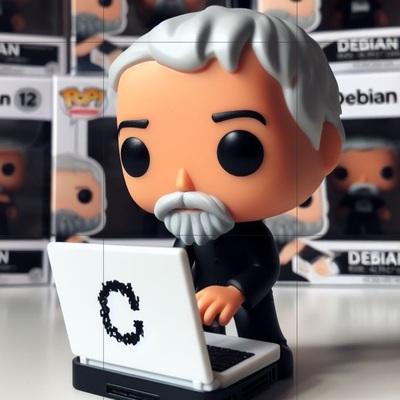Edit: solved. Sorry guys, it was something silly. Instead of clicking shutdown on windows I just hard pressed the off button for some seconds on the laptop. So I booted back on windows and let it shutdown normally and then Debian was able to boot again. Hehe
So I’ve made a clean install of Debian 12 when it came out and have been using only it exclusively for this time. But I had Windows 10 on dual boot already since when I was using Debian 11, I just never booted on Windows until now.
I had to fill in some PDF documents and ended up having to go to windows and use Adobe Acrobat there because LibreOffice and google docs kept messing up the PDF files when I tried to add text to them.
So I did my thing on windows and finished it all just now and then rebooted and tried to boot my Debian 12 and it won’t boot. All I see is:
/dev/sda11: recovering journal
/dev/sda11: clean […] files, […] blocks
And it is stuck here forever. I already tried to reboot multiple times.
I did nothing on windows to mess with the Linux partitions btw. Only chrome / acrobat / and I sent the files to google drive (so I didn’t even try to copy them directly into the Linux partition or anything).
Please tell me I did not brick my OS and need a clean stall pls. What can I try? The answers I’ve tried from google don’t work.
It is Debian 12 stable with nothing but software from the official stable repositories and flatpak.
Not sure this will help you but windows by default does not really shutoff. Try to google (or duckduckgo or similar) about fast startup mode and how to properly shutdown windows. That might sort it if you are lucky.
Thanks, not this in specific but it was something related to not shuting down properly. I powered off from windows by holding the off button instead of clicking on shutdown (I was afraid windows would want to install updates b/c I didn’t use it for so long). So I booted windows again and turned it off properly then Debian came back to life.
Great. Glad you managed to fix it. :)
Yes, windows can make some devices not function correctly on Linux (wifi cards for example) when it’s shut down with fast boot enabled
Boot from a live disc/usb, check the kernel logs. That should at least tell you where the boot process got stuck, what to do about it depends on what exactly broke.
You can always boot from a live medium, chroot into it and fix stuff, e.g. a live USB or CD/DVD. They can be created from Windows.
Are you able to see the boot log while it’s booting? Hit escape if not, and see where it’s getting stuck.
Not related but I’ve had some dual booting issues aswell. Turns out that the drives mounted in Linux didn’t properly unmount on shutdown so when trying to access them on Windows they wouldn’t be accessible.
Just some info for anyone that might be having issues
11 partitions… sounds like some of them need a nofail flag in fstab.
stackexchange will probably give you a better answer than lemmy (that’s me trying to be helpful with good advice)
Whatever the answer is, you’ve now learned to run windows in a virtual machine only.
what aboot separate disks?
The only way windows won’t make your bootloader its bitch is if you swap drives which is annoying at best. Virtual machine is the way to go, you can even dedicate a secondary video card to it if you’ve got the patience to set the VM up right.
I have a VM set up with single GPU pass through from fedora 40 and it works well. I also have win10 and 11 installs on dedicated disks for testing purposes (IHV).
I tend to bounce between them depending on what I need to do. In terms of a ‘traditional’ multi boot scenario, isolating OS installs to their own disks rarely results in any problems unless you attempt to install Windows with other systems / disks present on SATA 0 (for example)
You mean you’re running the VMs direct from disk? That’s something I’ve been wanting to do for a while but just never did… no reason, just haven’t done it. Do you see any performance difference versus a virtual disk?
Sorry no, I meant I use my VFIO setup on the fedora 40 disk, but also have conventional win10 and 11 installs on their own SATA SSDs.
The Win10 VM I have within vfio practically has transparent performance (I don’t allocate all threads to it, however), but it’s not always suitable for the types of hardware I need to test.
@GreatDong3000 boot with a live versión on Debian and repair the grub !




